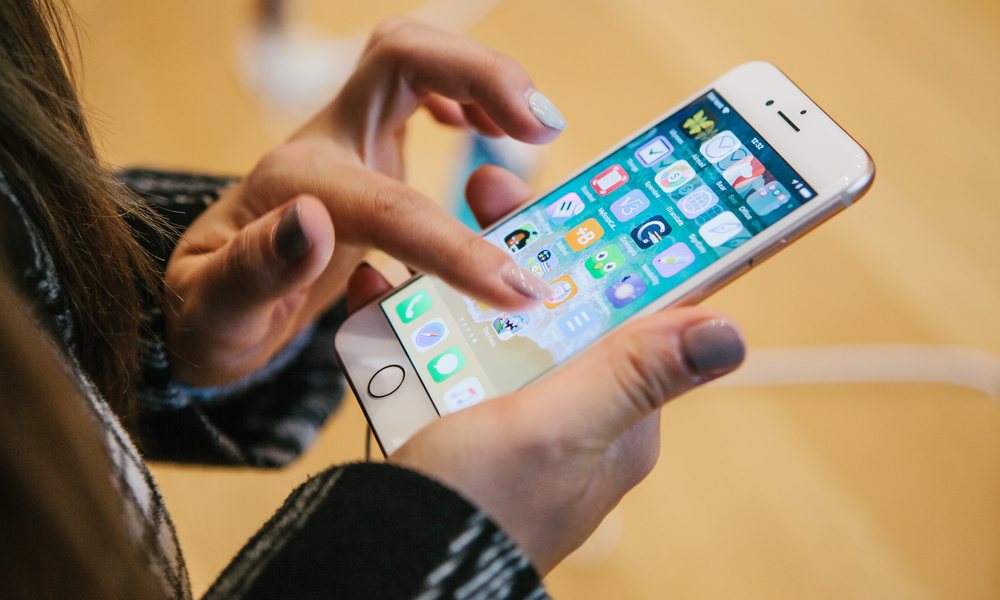Apple’s ‘iPhone SE 2’ Coming Early Next Year with iPhone 11 Performance
 Credit: franz12 / Shutterstock
Credit: franz12 / Shutterstock
Toggle Dark Mode
We’ve been hearing reports for a few months that Apple will be bringing back the spiritual successor to the iPhone SE sometime next year, and now the pieces all seem to be lining up for an early 2020 release.
As we already know from previous reports, the new “iPhone SE 2” will be based on the design of the 2017 iPhone 8, rather than an accommodation for those who preferred the four-inch screen size of the original.
However, according to a new research note by venerable analyst Ming-Chi Kuo, and shared by 9to5Mac, Apple won’t be scrimping on the specs for the new device, which will get a wholesale upgrade of the internals to include the same A13 processor and 3GB RAM found in Apple’s brand new iPhone 11.
At a time when Apple has historically skimped on putting its latest chips in lower-end devices — for example, both the seventh-generation iPod touch and new 10.2-inch iPad only include Apple’s 2016-era A10 processor — it’s encouraging that the new model will get the same performance specs. However, it’s also not entirely unprecedented, as the original iPhone SE, released in the spring of 2016, also sported the same A9 chip found in Apple’s then-current iPhone 6s and iPhone 6s Plus.
The Original iPhone SE
Although many users were still hoping that the new iPhone SE would see a continuation of the older and more compact design, it seems that Apple no longer shares this priority — assuming that it ever really did.
Back in 2014, when Apple finally chose to follow the rest of the smartphone market into producing larger 4.7-inch and 5.5-inch form factors, many users who had been waiting for a larger iPhone applauded the move. However, a vocal minority thought the four-inch iPhone 5s design was just fine, and resisted the larger models.
This resulted in a group of potential customers that were being left behind, and by the time Apple released the iPhone 6s in late 2015, it became clear that Apple needed to do something, and by early 2016, the iPhone SE came out as an answer to that group — a device that featured most of the same major specs as the iPhone 6s, from the processor to the camera — but retained the familiar iPhone 5s design.
However, with the increasing prices of Apple’s standard iPhone models, the iPhone SE was at least as much of an answer to users who didn’t want to spend a lot of money on an iPhone.
The New iPhone 8
Of course, that was three years ago, and considering how much the iPhone has evolved in that time, it seems likely that many iPhone SE users have given up on their quest for a smaller screen and moved on to an iPhone 8 or iPhone X-series model.
In fact, after four years of producing the 4.7-inch iPhone design — double the time that the four-inch iPhones originally lasted — it’s quickly become the new normal, and it’s Apple’s iPhone X-series devices that are new and different.
According to Kuo, the target market for the new “iPhone SE 2” is a large group of iPhone 6 owners who have avoided upgrading, partly due to resistance to the new iPhone X designs. So in a sense, it’s not so much about screen sizes anymore as it is about resistance to change in general.
In this case, however, one driving factor may be the release of iOS 13, which has now left these older iPhone 6 devices behind. This not only leaves them out of the newest features, but more importantly to Apple, means that they can’t subscribe to Apple Arcade or Apple TV+.
An A13-equipped iPhone 8 would address this issue by not only supporting Apple’s latest version of iOS, but also providing the same kind of performance that a user would get with Apple’s newest iPhone 11 while offering a form-factor that would be comfortable and familiar to the many users who still want a home button and Touch ID.
One thing Kuo doesn’t mention is what other specs may get bumped. Although he says that most of it will mirror the iPhone 8, it’s worth noting that the original iPhone SE had the same camera as the iPhone 6s. While it’s extremely unlikely that the new version will gain any extra lenses, it seems plausible that Apple will at least bump up the single lens to match the main camera found on more recent iPhone models, possibly even that of the iPhone 11.
How Much Will It Cost?
Kuo did not offer any thoughts on exact pricing for the new iPhone. Since Apple is still selling the iPhone 8 in its lineup, however, it seems likely that the new iPhone SE would be a direct replacement for this.
Currently, the only iPhone 8 model still offered — in a 64 GB configuration — sells for $449. The original iPhone SE was originally released in a 32 GB model for $349 back in 2016, so we’d expect the pricing to land somewhere in that range, depending on what capacities Apple chooses to sell the new model in.
While it seems very likely that the original iPhone 8 would be discontinued with the release of the “iPhone SE 2,” the fate of the iPhone 8 Plus is less certain. It seems unlikely that Apple would produce an “iPhone SE 2 Plus,” but it’s not outside of the realm of possibility. Alternatively, Apple could just discontinue both models anyway, or could even continue selling the older iPhone 8 Plus separately.
[The information provided in this article has NOT been confirmed by Apple and may be speculation. Provided details may not be factual. Take all rumors, tech or otherwise, with a grain of salt.]






